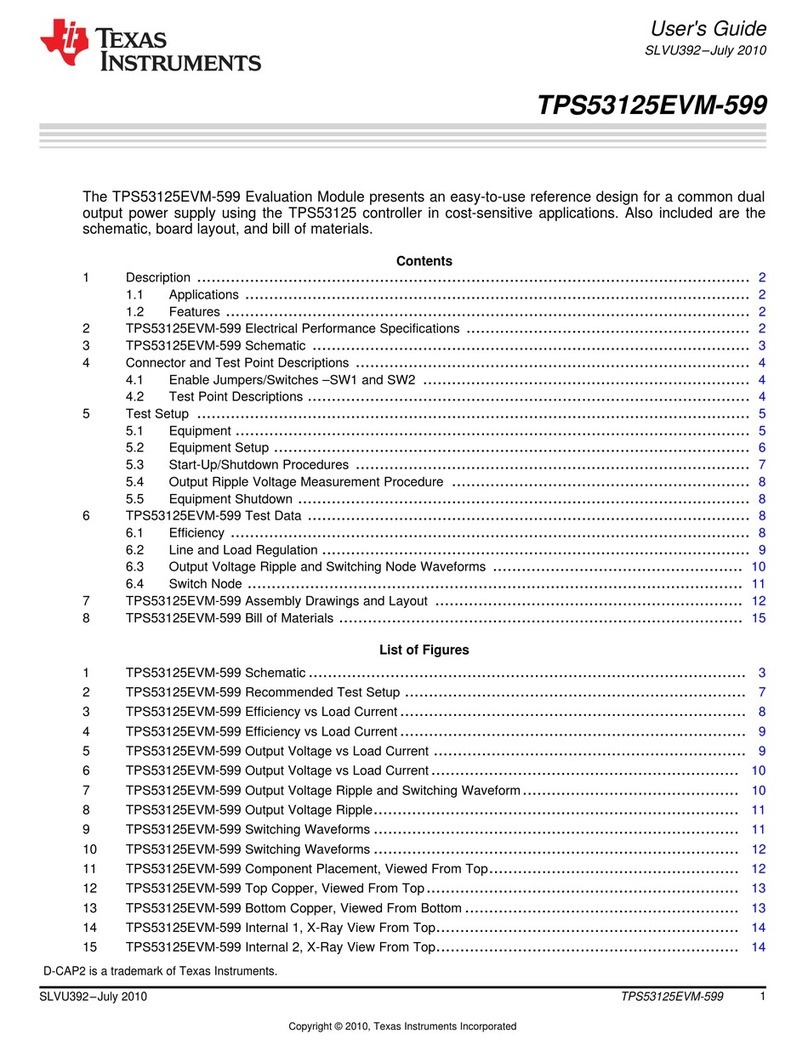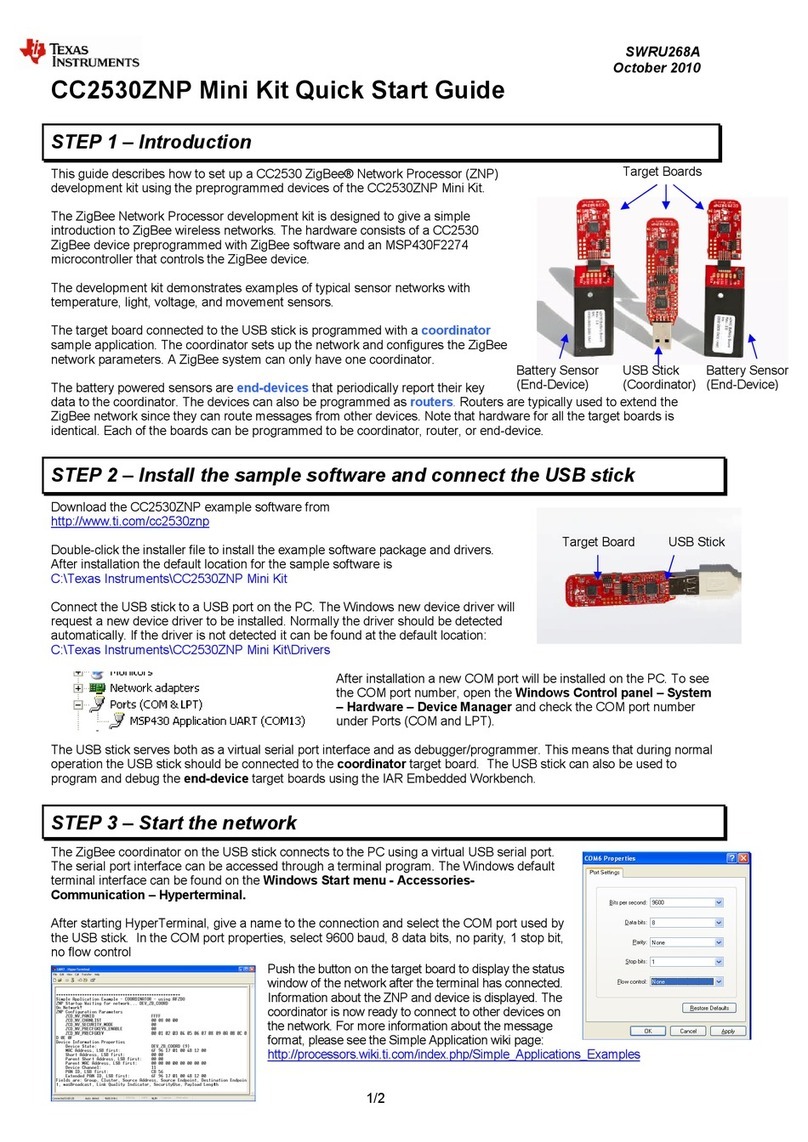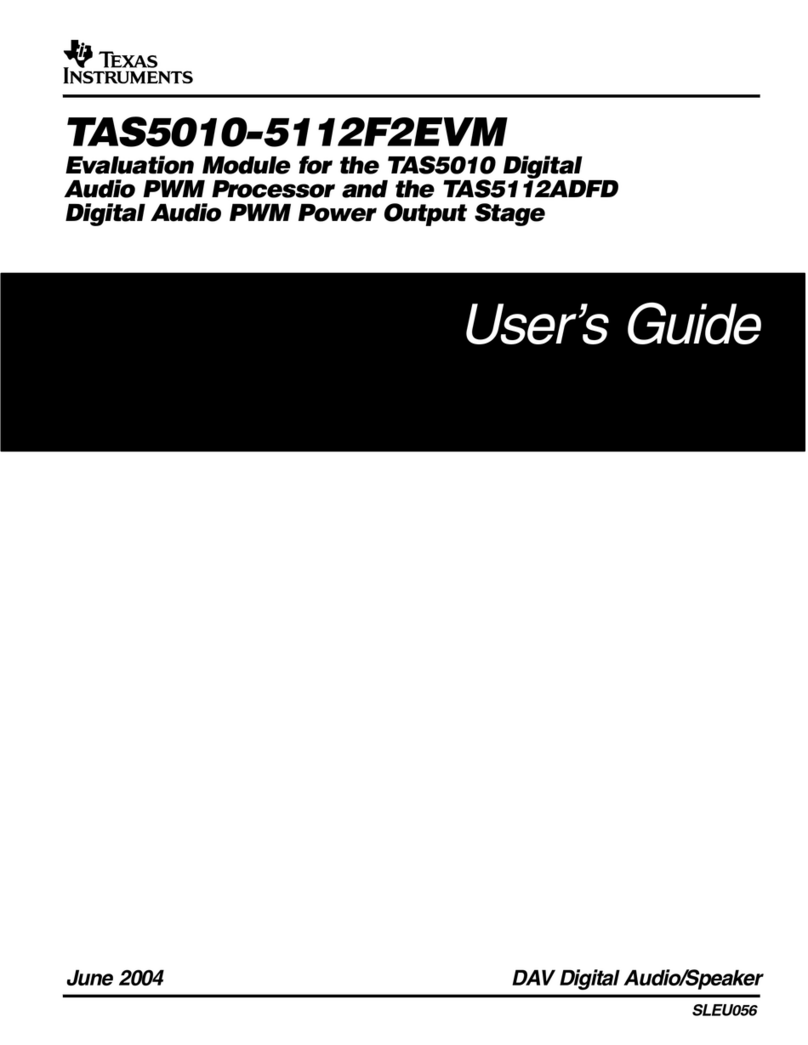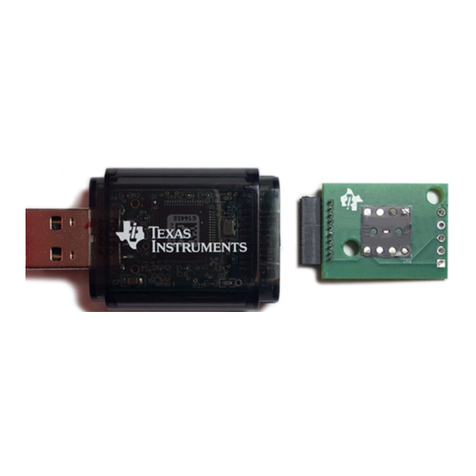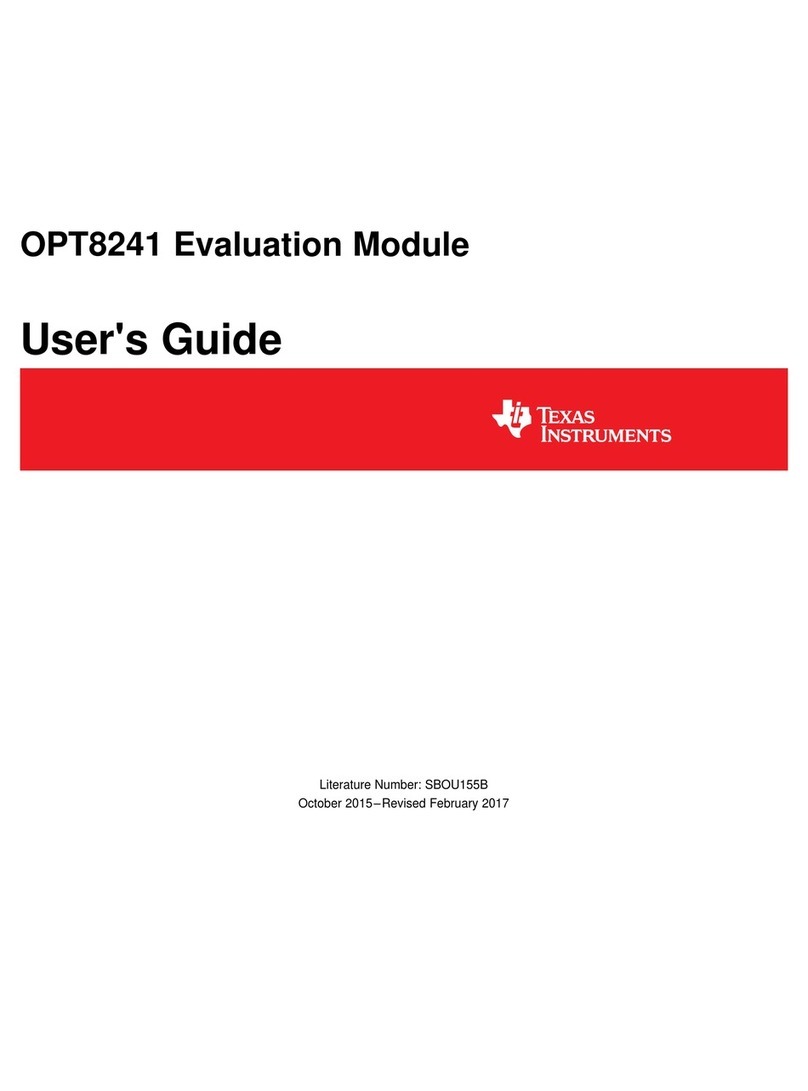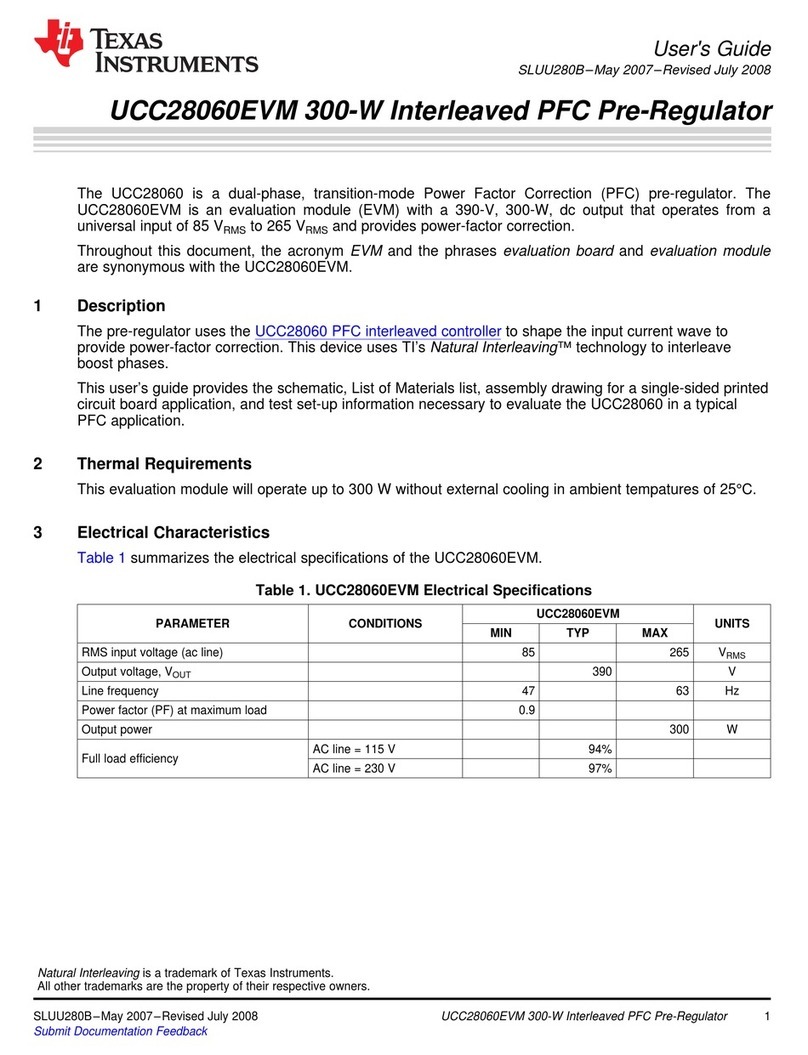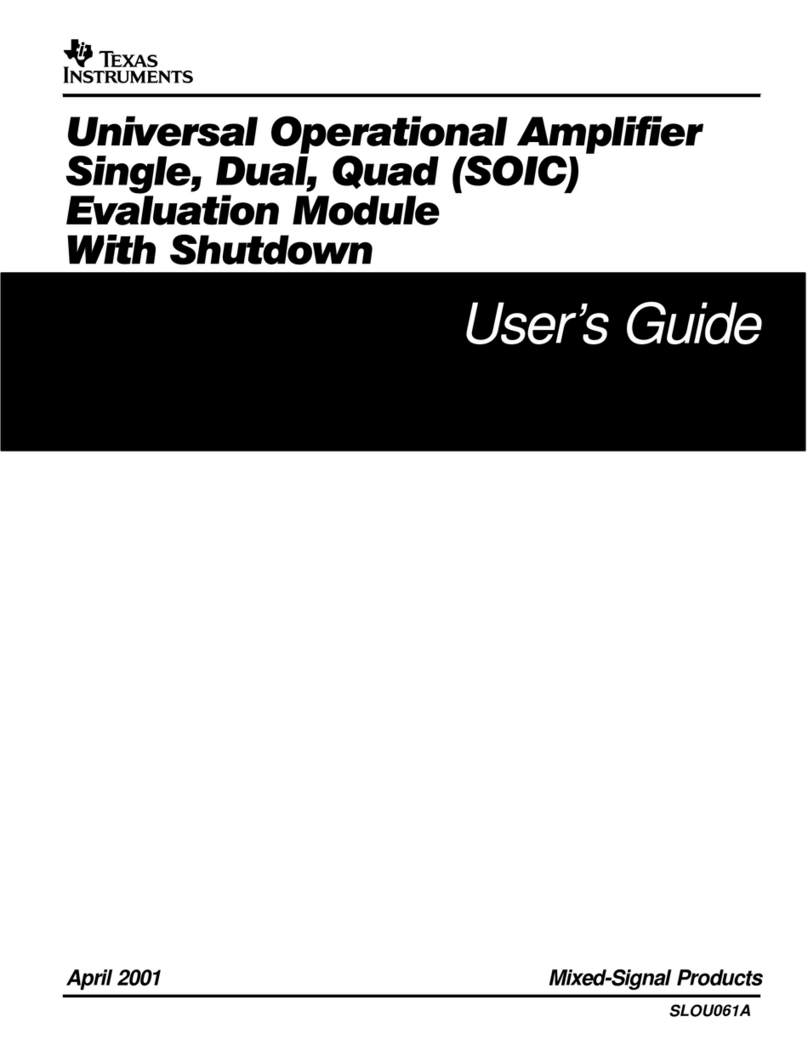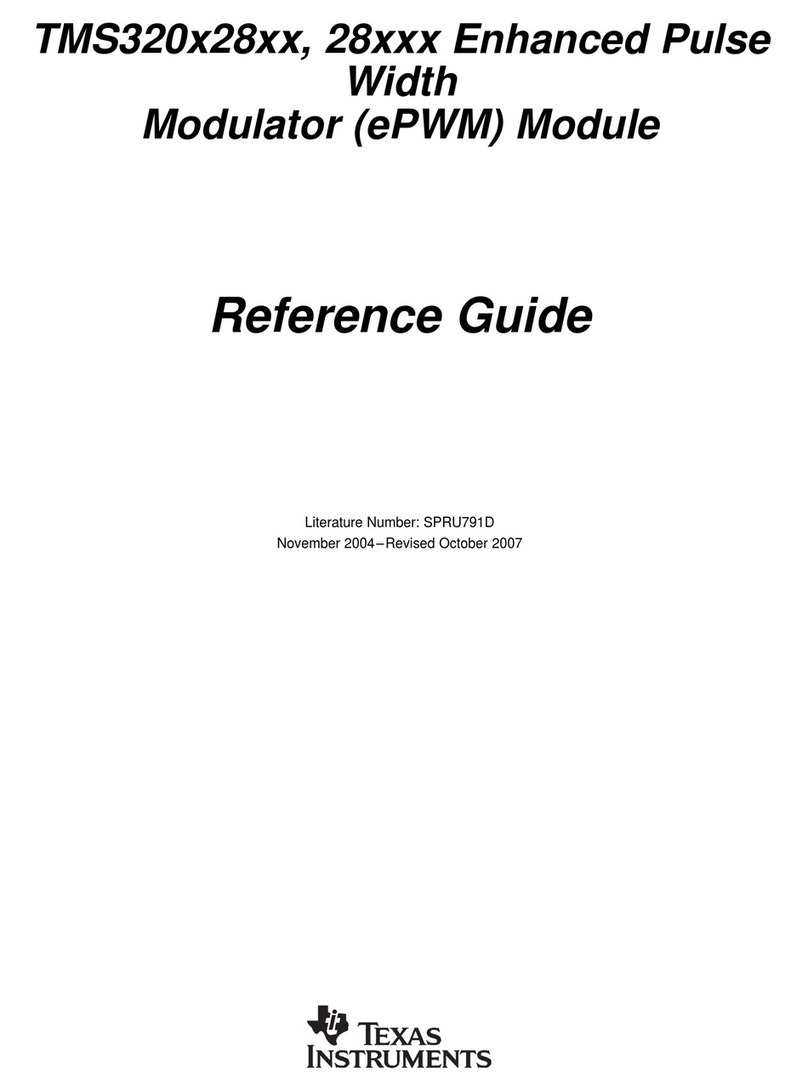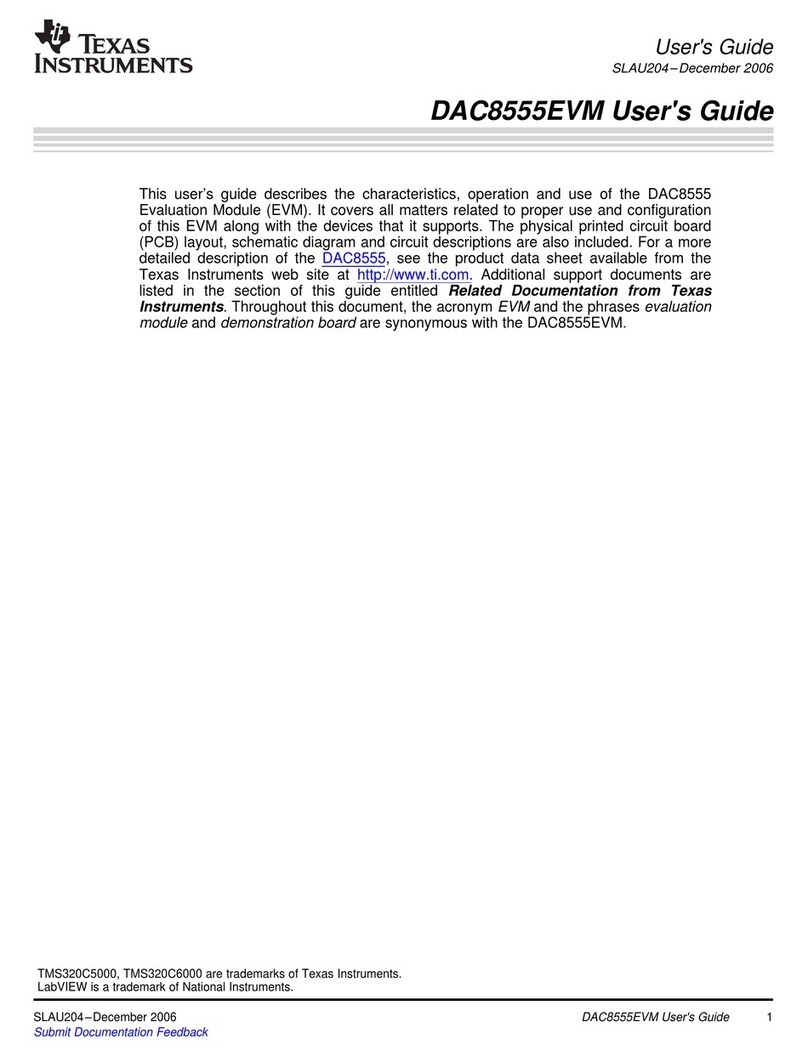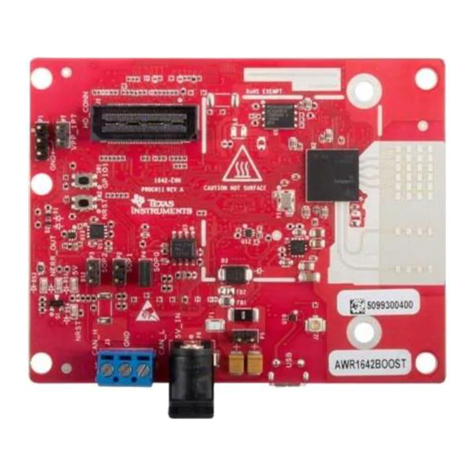
User’s Guide
IWRL6432BOOST/AWRL6432BOOST EVM: FR4-Based
Low Power 60 GHz mm-Wave Sensor EVM User Guide
Chethan Kumar Y. B.
1 Abstract
The xWRL6432BOOST from Texas Instruments is an easy-to-use low cost FR4-based evaluation board for the
xWRL6432 mmWave sensing device, with standalone operation and direct connectivity to the DCA1000EVM for
raw ADC capture and signal processing development. This EVM contains everything required to start developing
software for on-chip Hardware accelerator and low power ARM Cortex® M4F controllers.
Table of Contents
1 Abstract................................................................................................................................................................................... 1
2 Getting Started........................................................................................................................................................................2
2.1 Key Features......................................................................................................................................................................2
2.2 Kit Contents........................................................................................................................................................................2
2.3 mmWave Out of Box Demo................................................................................................................................................2
3 Hardware................................................................................................................................................................................. 3
3.1 Block Diagram....................................................................................................................................................................5
4 EVM Mux Block Diagram........................................................................................................................................................7
5 PCB Storage and Handling Recommendations:..................................................................................................................8
5.1 PCB Storage and Handling Recommendations:................................................................................................................ 8
5.2 Higher Power Demanding Applications:.............................................................................................................................8
6 XWRL6432BOOST Antenna................................................................................................................................................... 9
6.1 PCB material...................................................................................................................................................................... 9
6.2 Switch Settings.................................................................................................................................................................11
6.3 LEDs................................................................................................................................................................................ 12
6.4 Connectors.......................................................................................................................................................................13
6.5 USB Connector................................................................................................................................................................ 13
6.6 DCA1000 HD Connector..................................................................................................................................................13
6.7 Booster Pack Connector for the LaunchPad Connectivity............................................................................................... 14
6.8 CANFD Connector........................................................................................................................................................... 14
6.9 LIN PHY connection.........................................................................................................................................................16
6.10 I2C Connections.............................................................................................................................................................17
6.11 XDS110 Interface........................................................................................................................................................... 17
6.12 Flashing the Board......................................................................................................................................................... 18
6.13 DCA1000EVM Mode......................................................................................................................................................18
7 Software, Development Tools, and Example Code............................................................................................................22
7.1 XWRL6432 Demo Visualization Getting Started..............................................................................................................22
8 TI E2E Community................................................................................................................................................................ 22
9 References............................................................................................................................................................................ 22
Revision History.......................................................................................................................................................................22
List of Figures
Figure 3-1. XWRL6432BOOST Top View....................................................................................................................................3
Figure 3-2. XWRL6432BOOST Bottom View.............................................................................................................................. 4
Figure 3-3. Salient Features of EVM (Top side)...........................................................................................................................4
Figure 3-4. Salient features of EVM (Bottom side)...................................................................................................................... 5
Figure 3-5. Functional block diagram.......................................................................................................................................... 5
Figure 4-1. Muxing options for the EVM...................................................................................................................................... 7
Figure 6-1. TX and Rx Antennas of the EVM.............................................................................................................................. 9
Figure 6-2. Virtual antenna array............................................................................................................................................... 10
www.ti.com Abstract
SWRU596 – DECEMBER 2022
Submit Document Feedback
IWRL6432BOOST/AWRL6432BOOST EVM: FR4-Based Low Power 60 GHz
mm-Wave Sensor EVM User Guide
1
Copyright © 2022 Texas Instruments Incorporated
